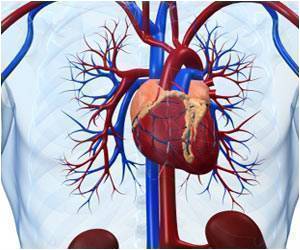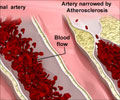A new research has revealed that fat around the outside of arteries is connected to the development of cardiovascular disease.

"Obesity is a growing problem, but most information that is coming from scientists and clinicians involves visceral adipose tissue-or the beer belly-which leads to a higher risk of cardiovascular disease. The fat that grows around the larger arteries throughout the body has been largely ignored. With this study, we wanted to see if it had any effect on the onset of cardiovascular disease, particularly in diabetics or those who are at risk," said manka.
Manka and his team transplanted fat tissue around the arteries of knockout mouse models that were predisposed for cardiovascular disease and diabetes.
"Your typical mouse doesn't naturally have that perivascular adipose tissue outside of the artery. We found that disease and buildup formed right inside of the artery next to the transplanted fat in these mice models. Besides the disease, we found that this fat tissue caused smaller blood vessels to grow around the larger blood vessles, called the vasa vassorum, which we don't see otherwise. Both of these effects are local effects on the adjacent artery," he explained.
Manka said these results show that perivascular fat is sensitive to metabolic cues and could be the link between metabolic dysfunction and vascular disease.
"This may be one of the reasons diabetics have increased rates of cardiovascular disease. We still don't know exactly what that link is. The perivascular fat is sensing these metabolic stimuli and is becoming dysfunctional itself, translating to local inflammation of vessel," he added.
Advertisement
These findings are being presented at the American Heart Association's Russell Ross Memorial Lectureship in 'Vascular Biology: Emerging Concepts in Vascular Disease'.
Advertisement














